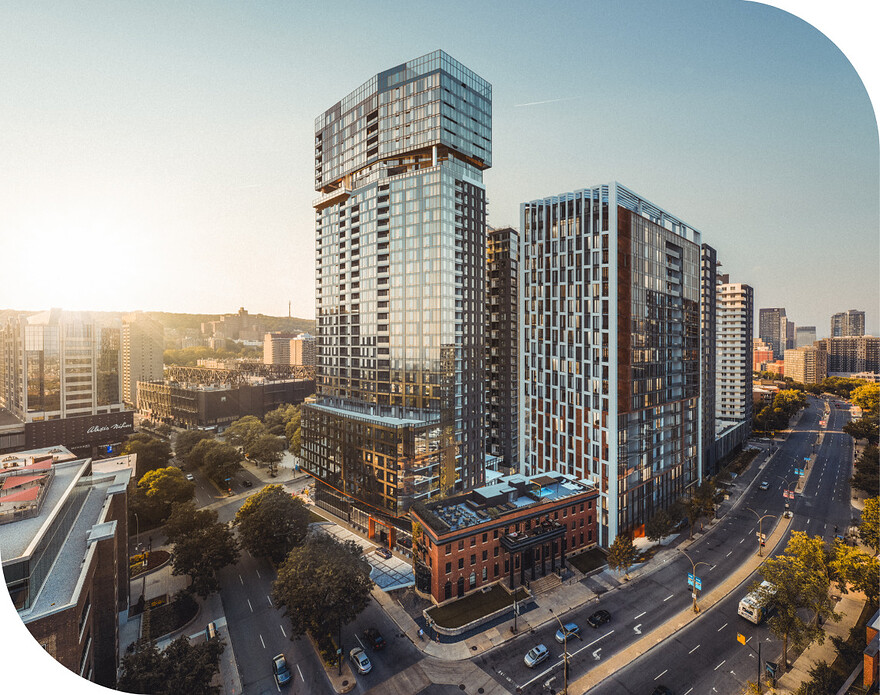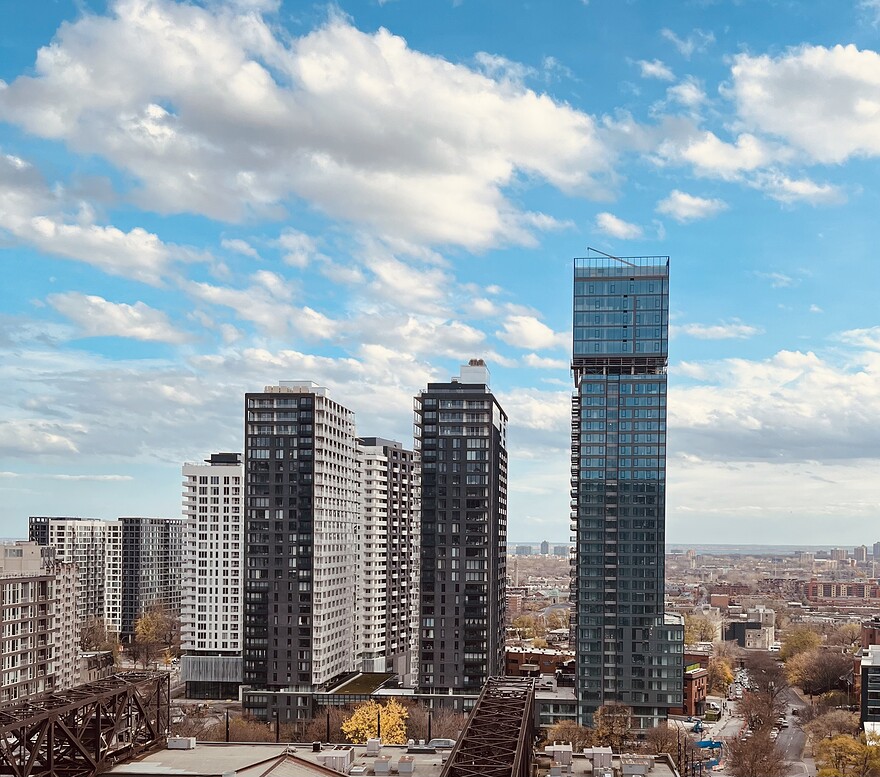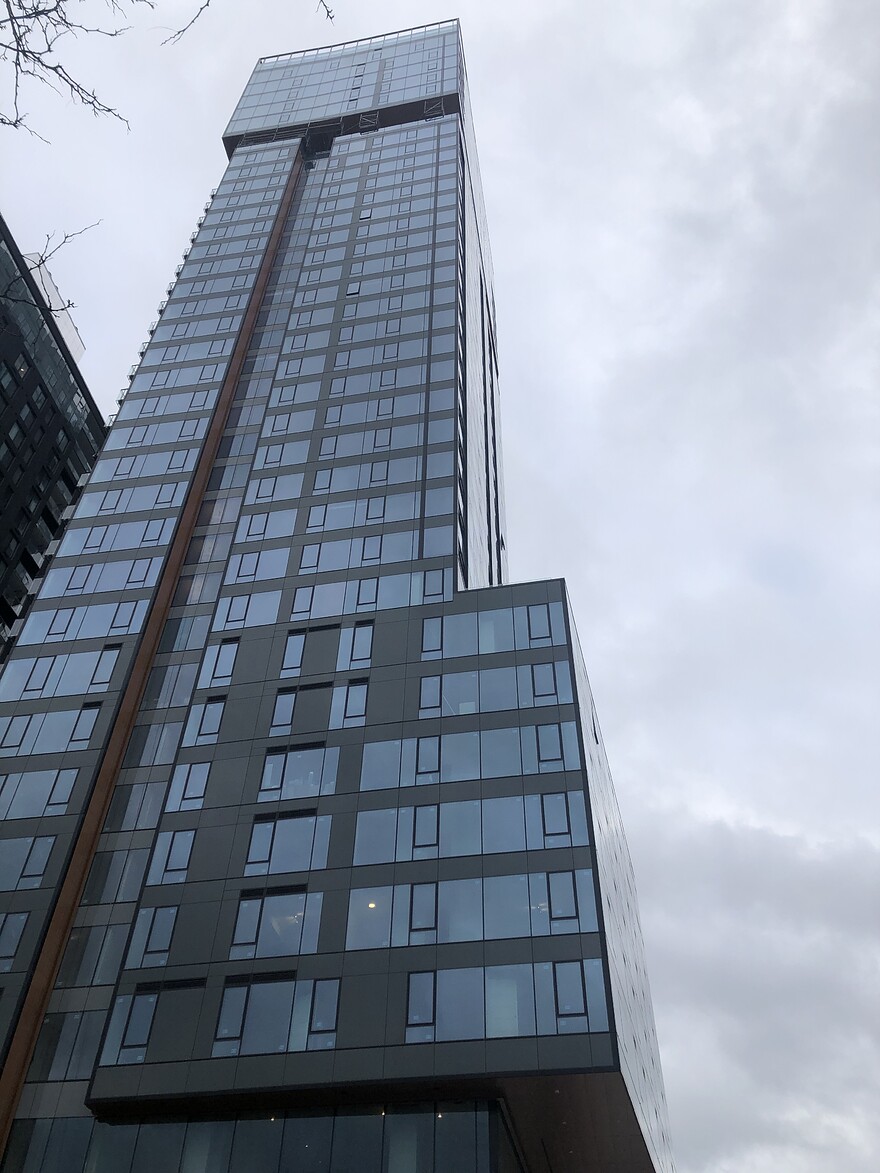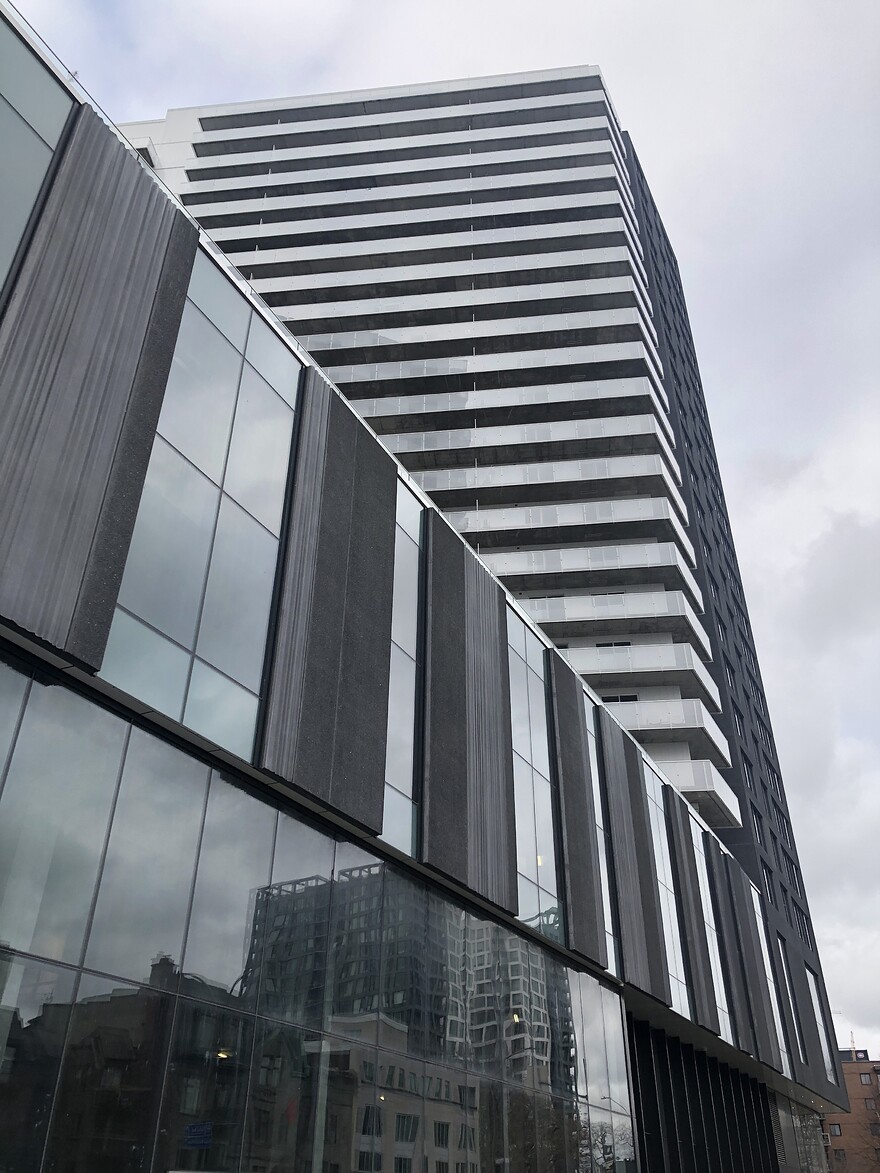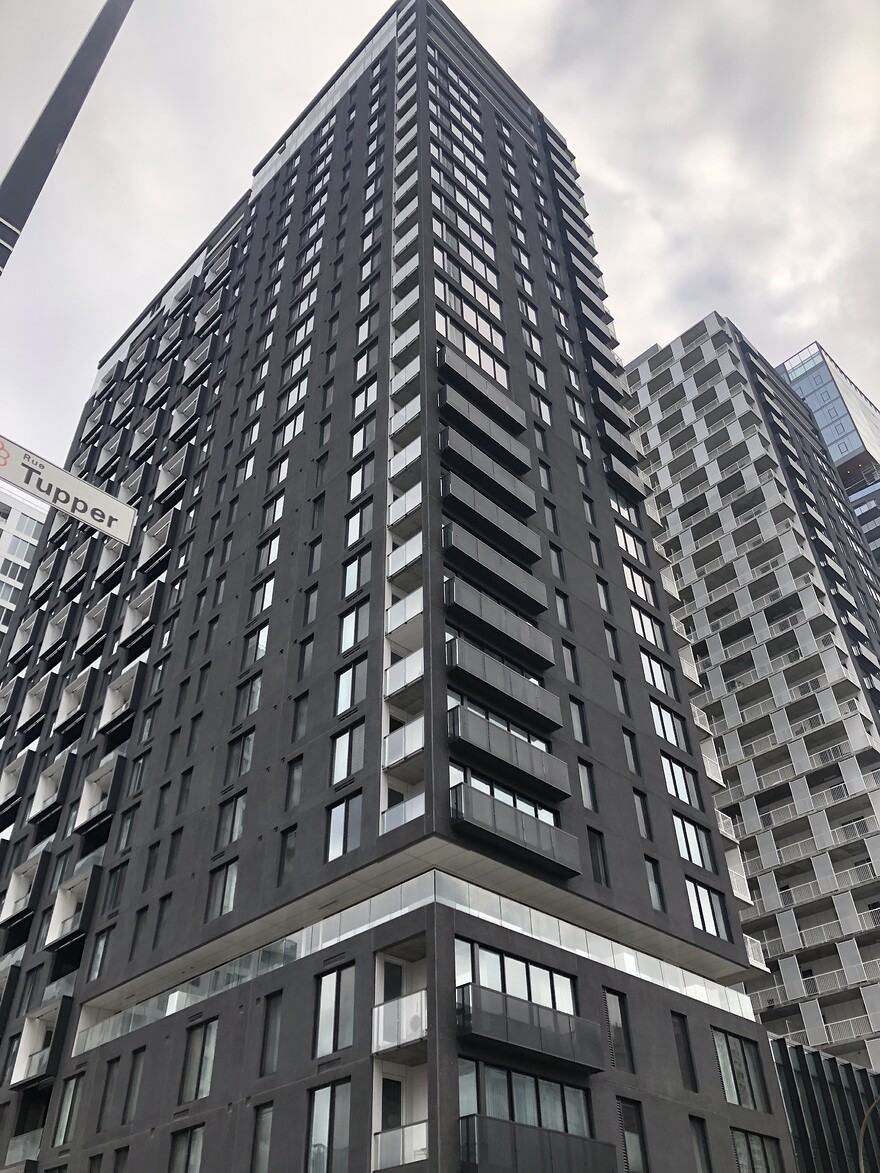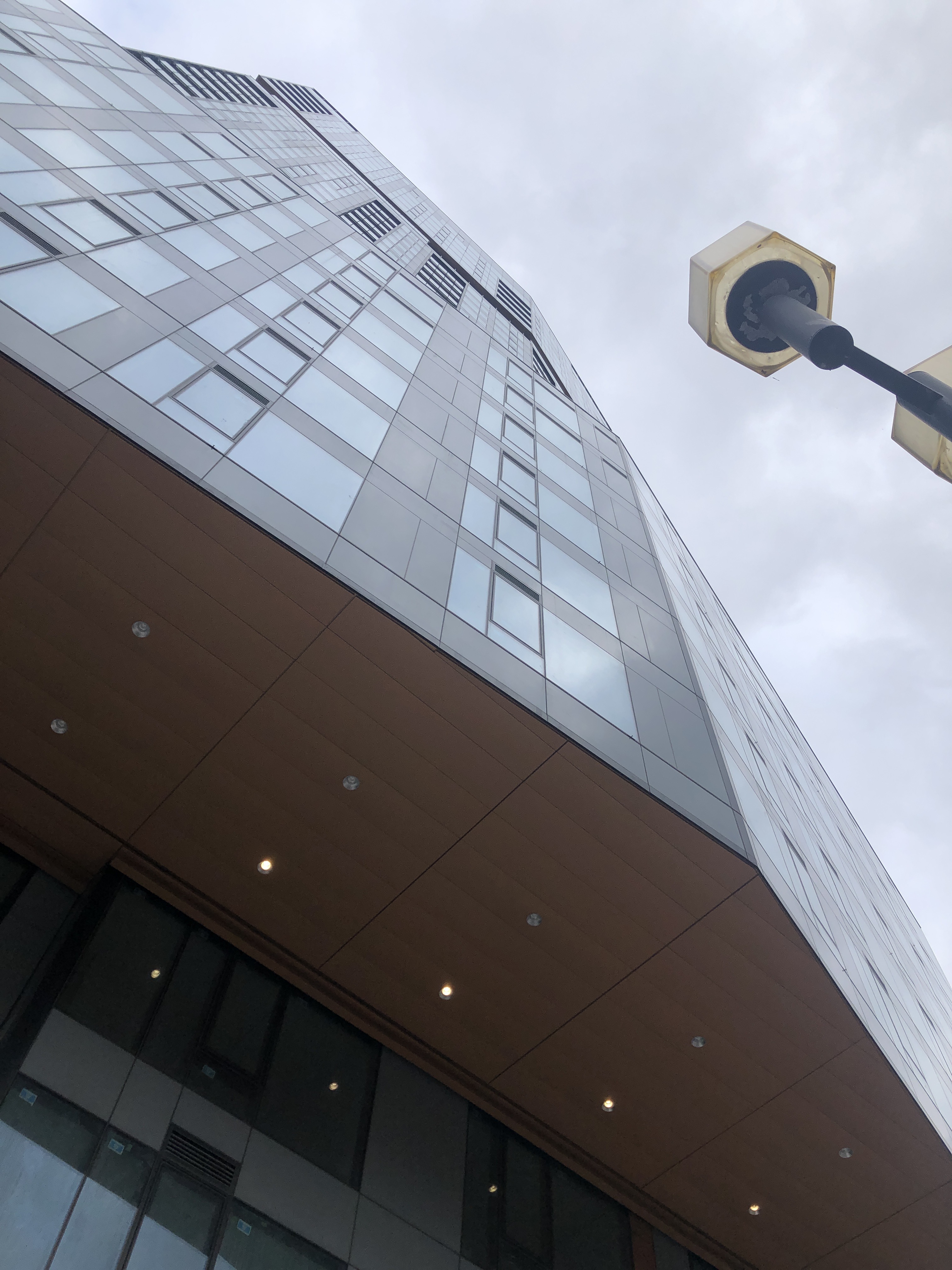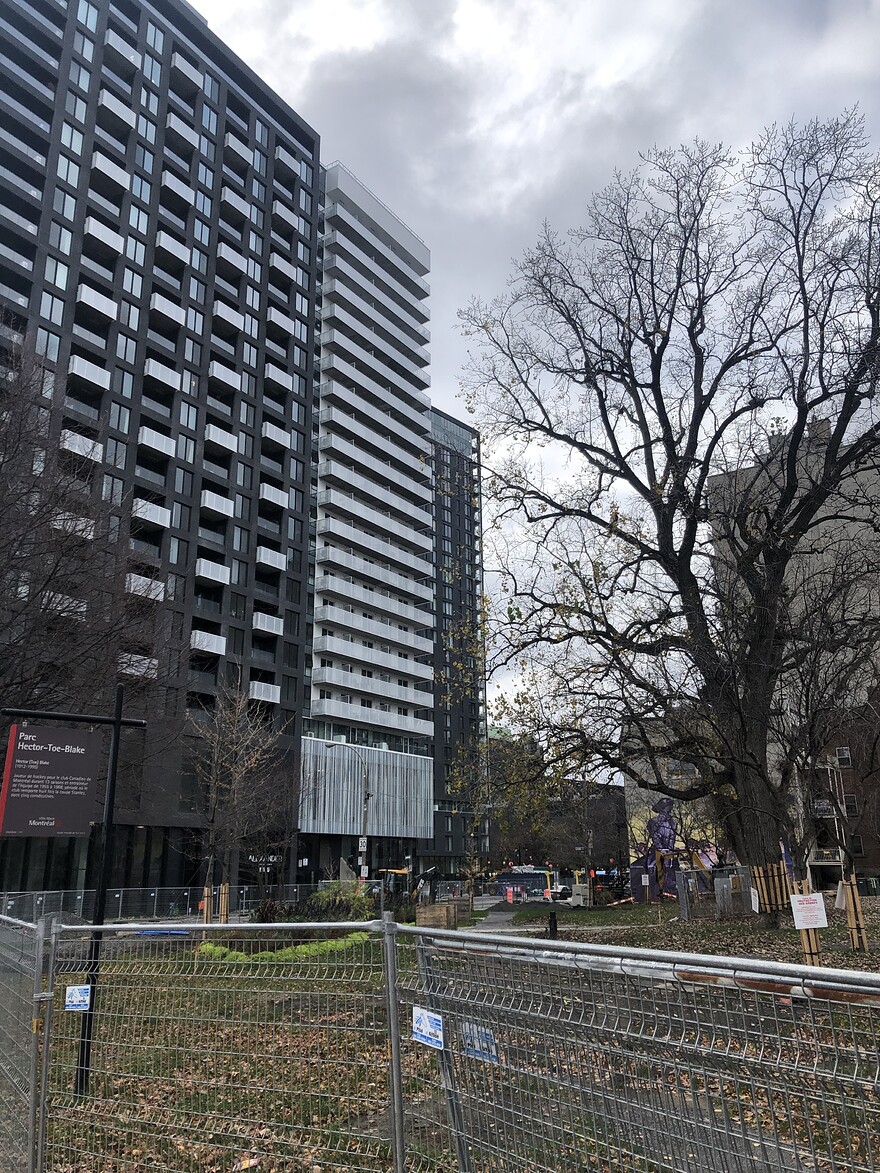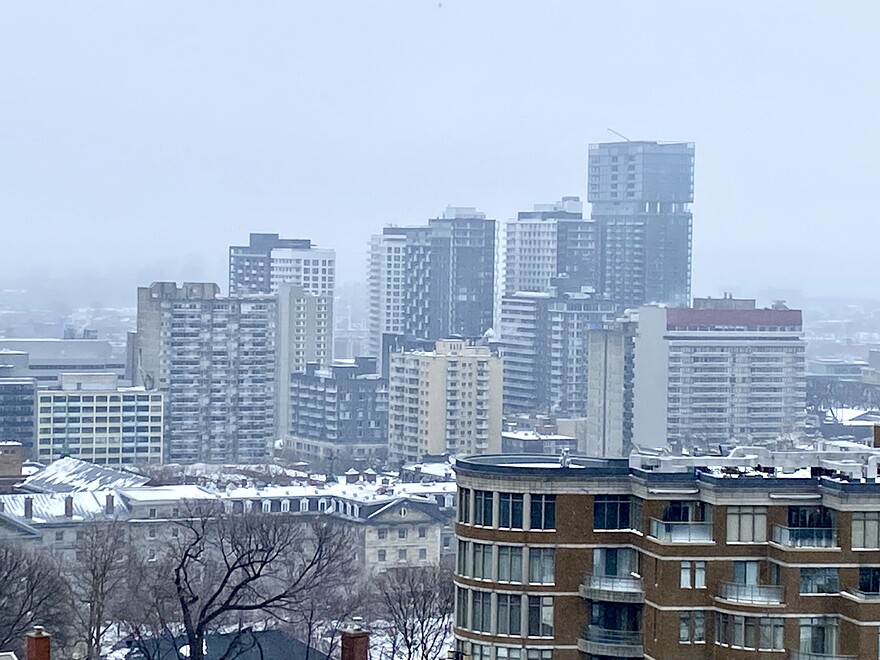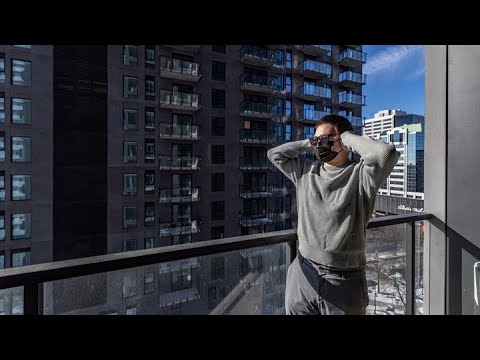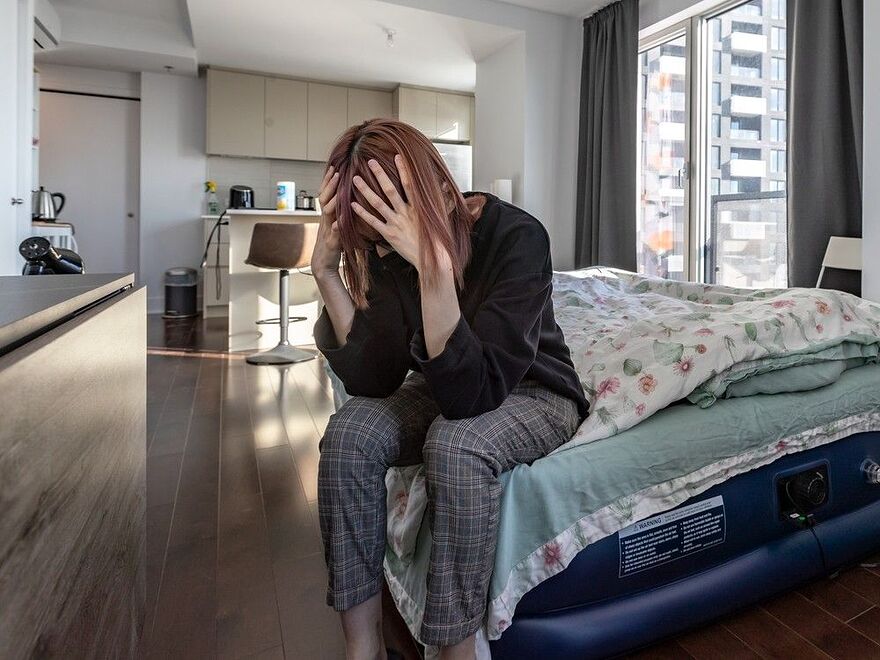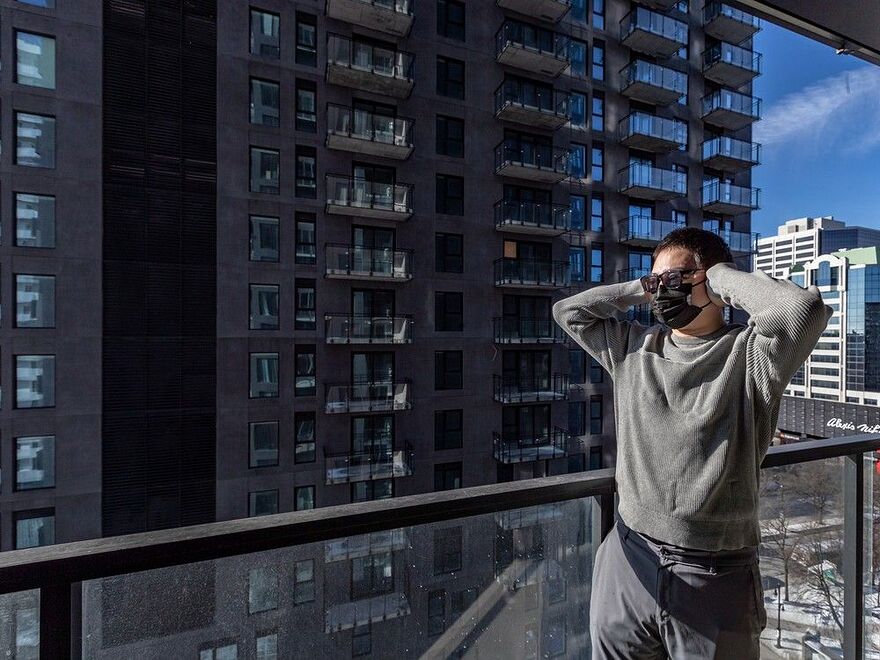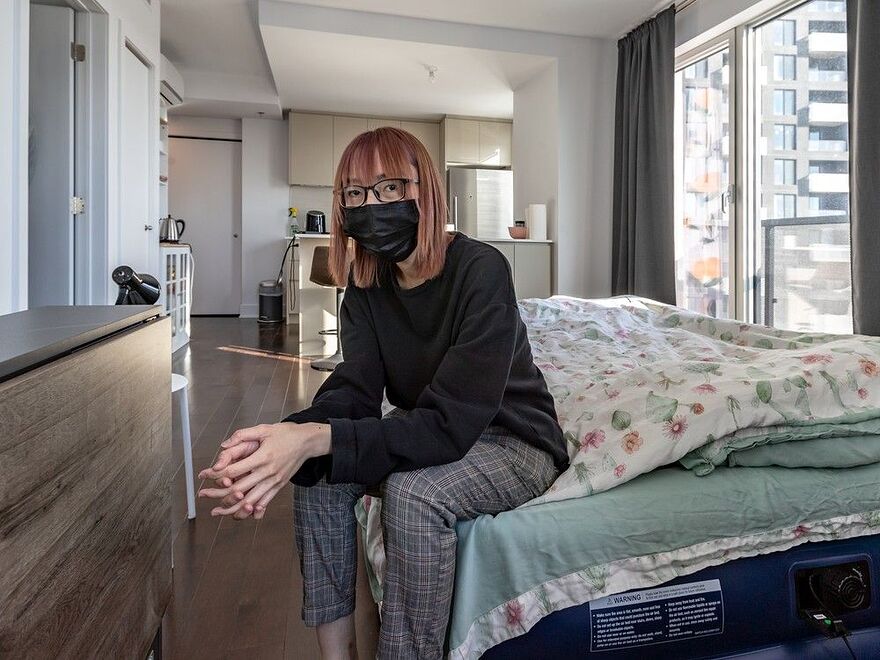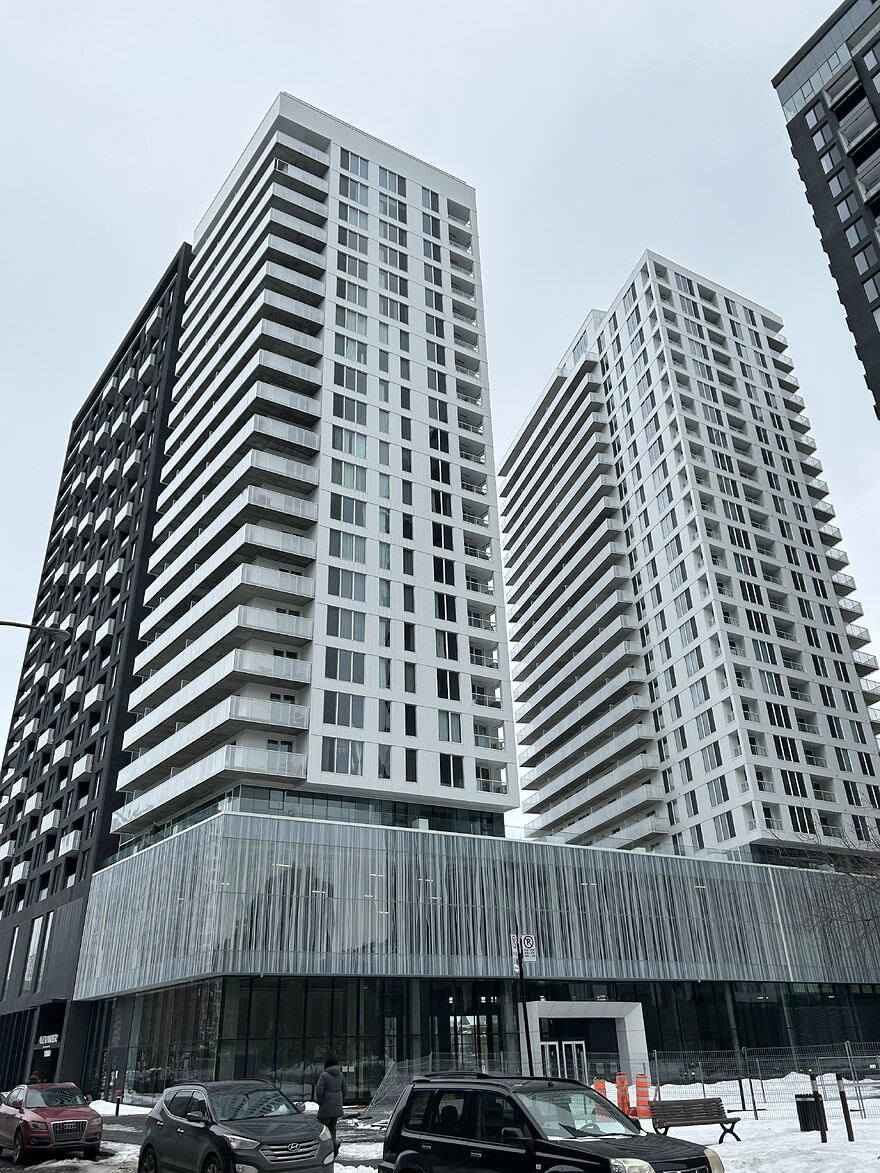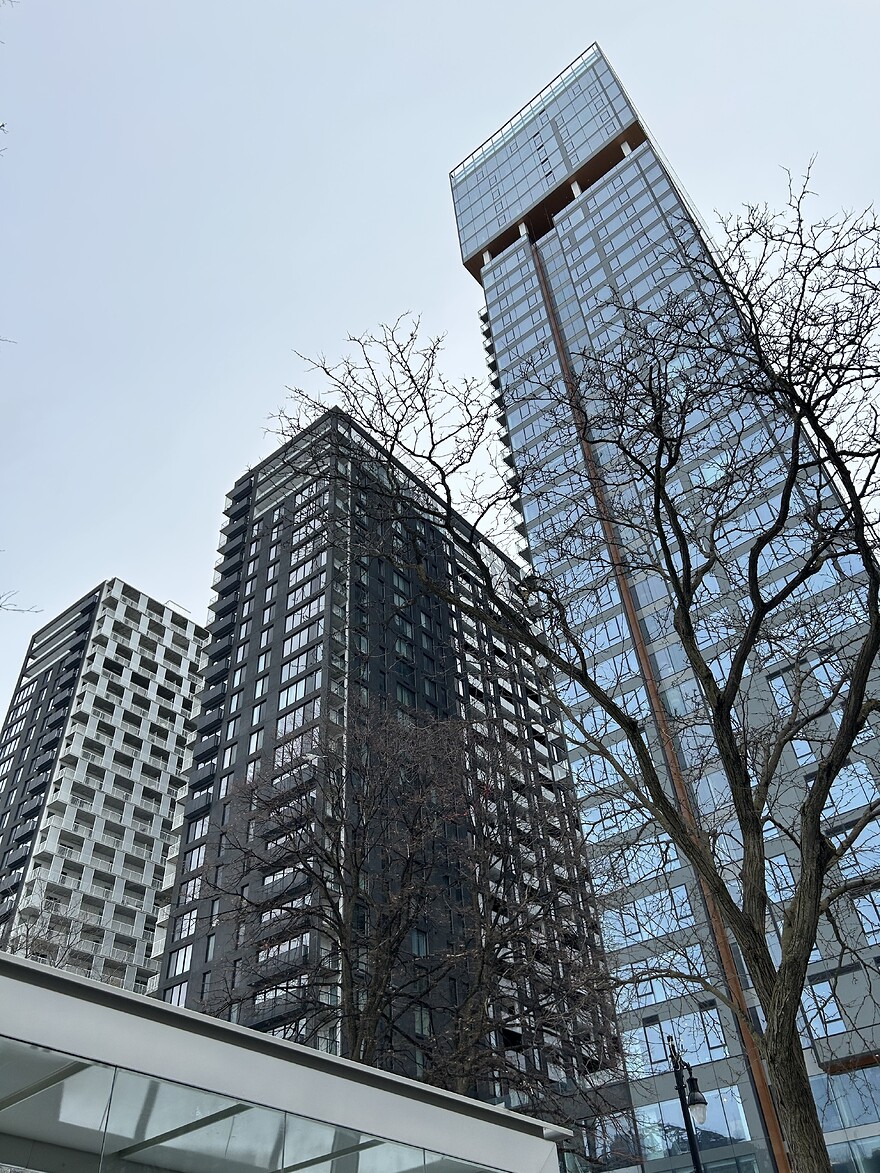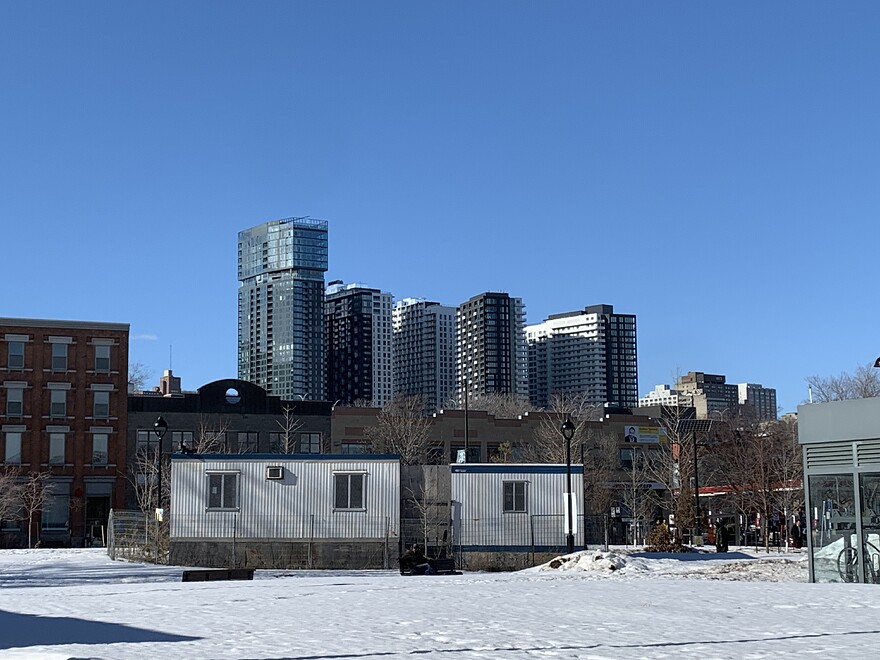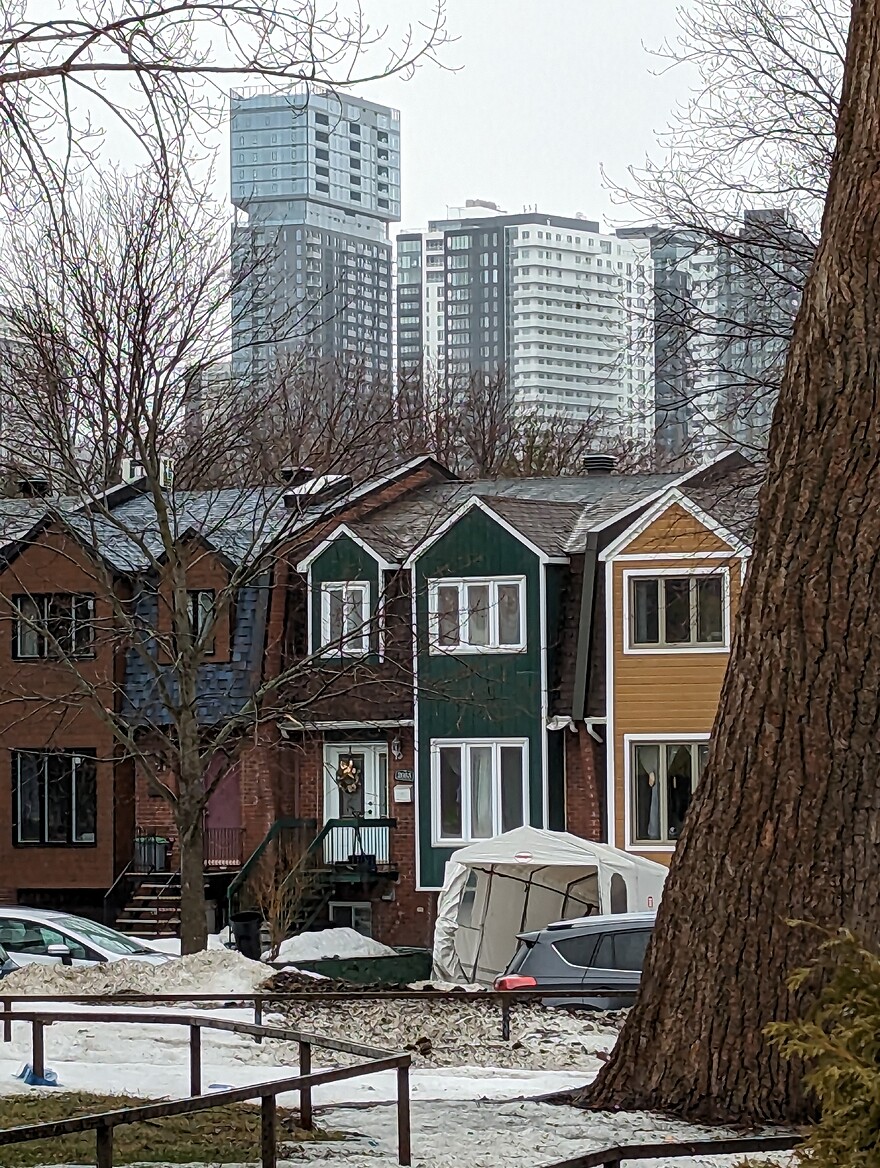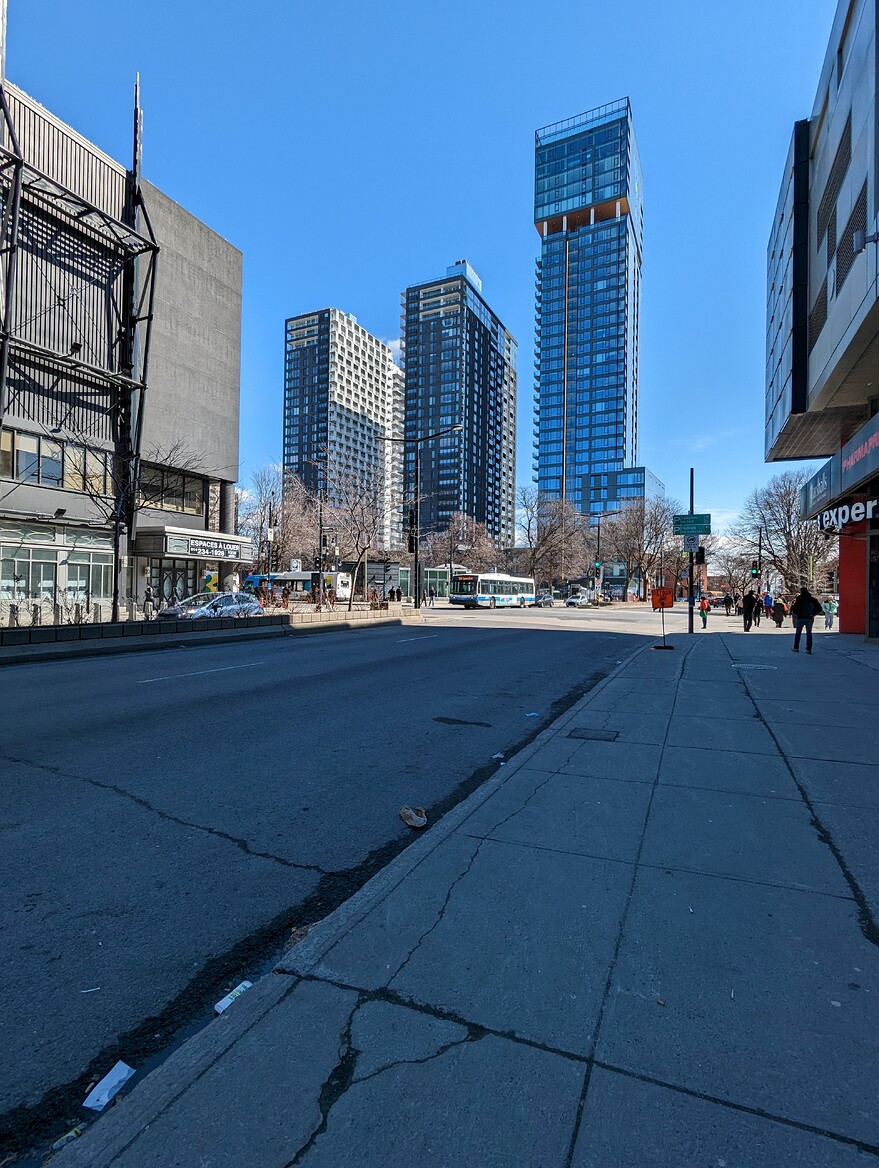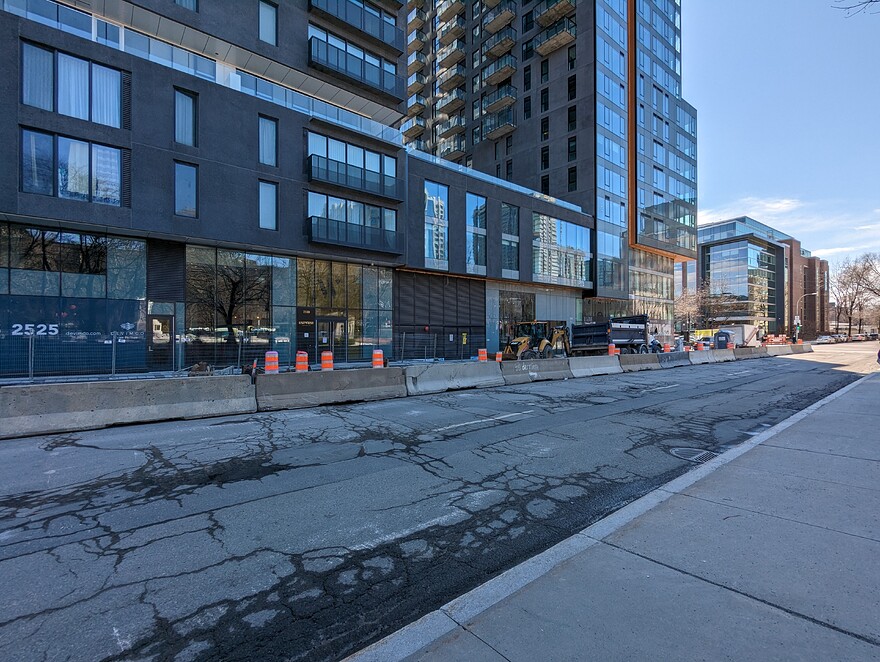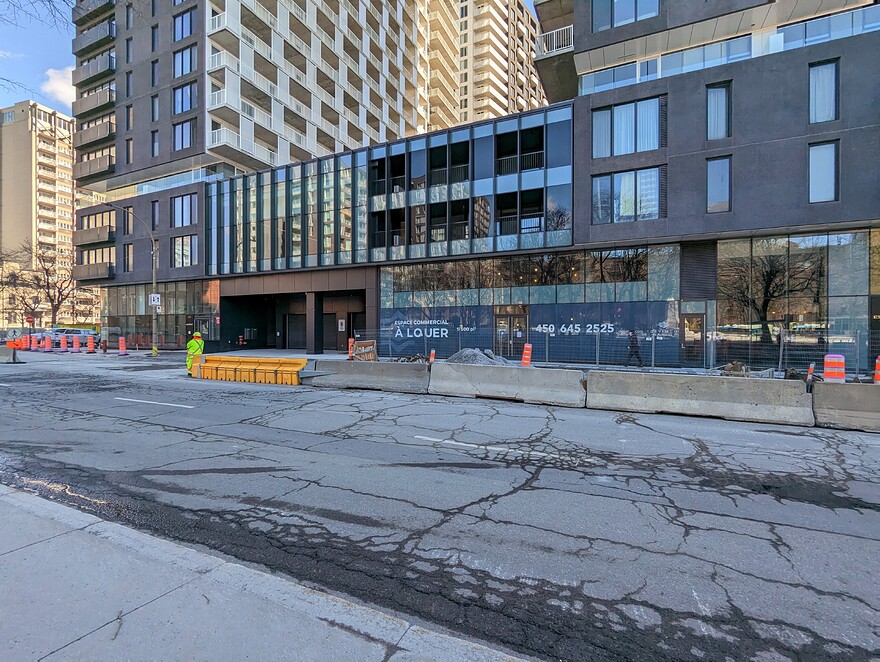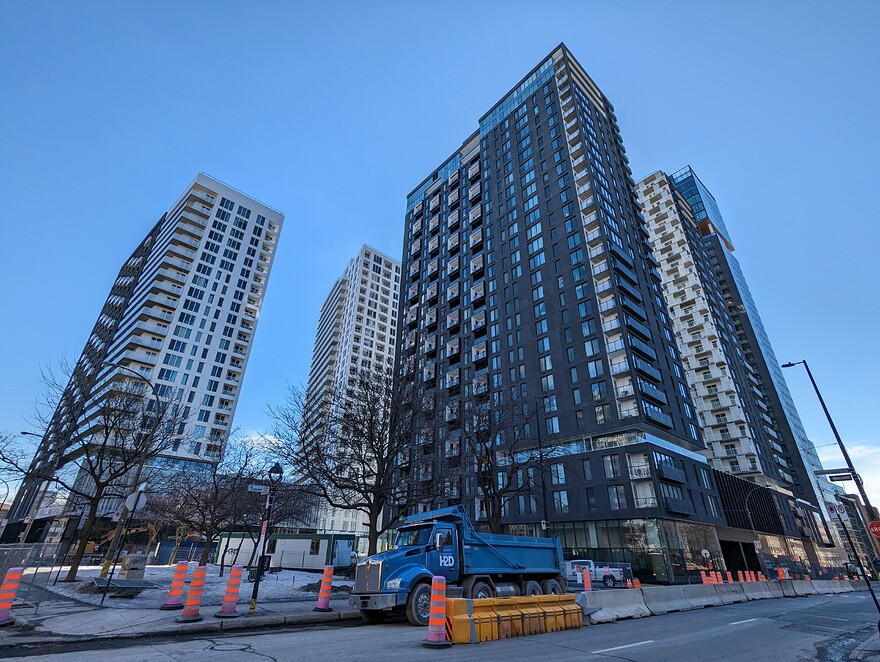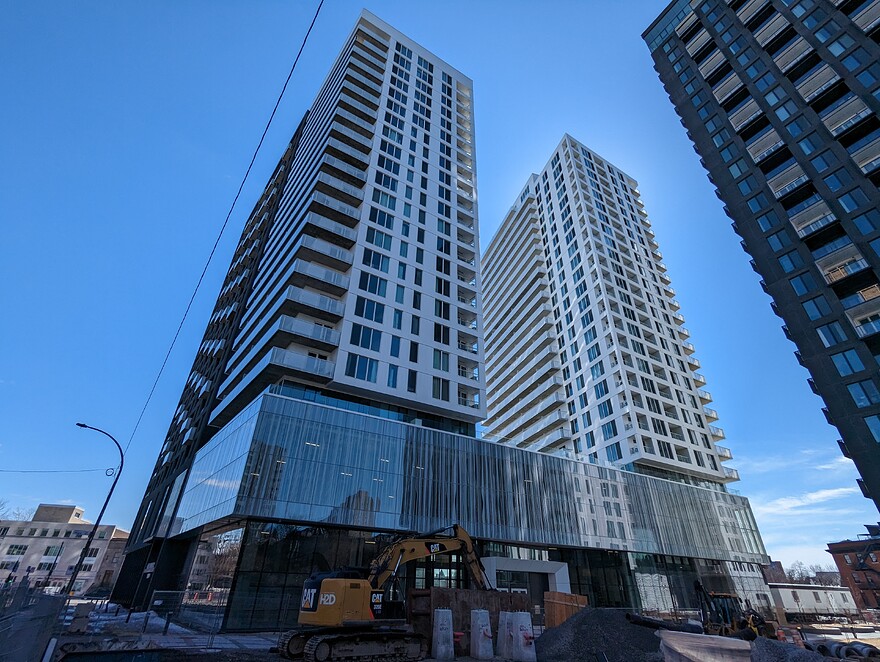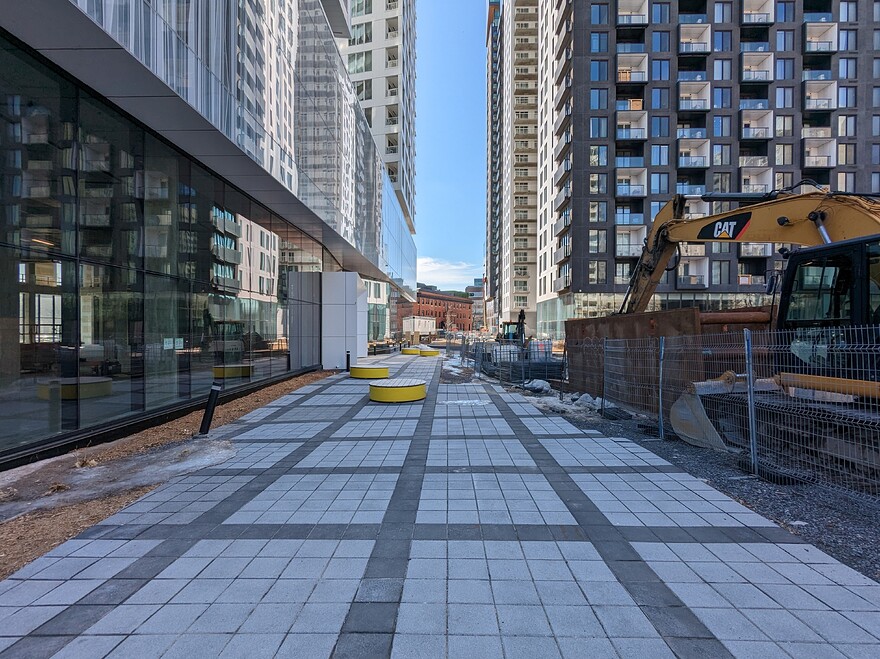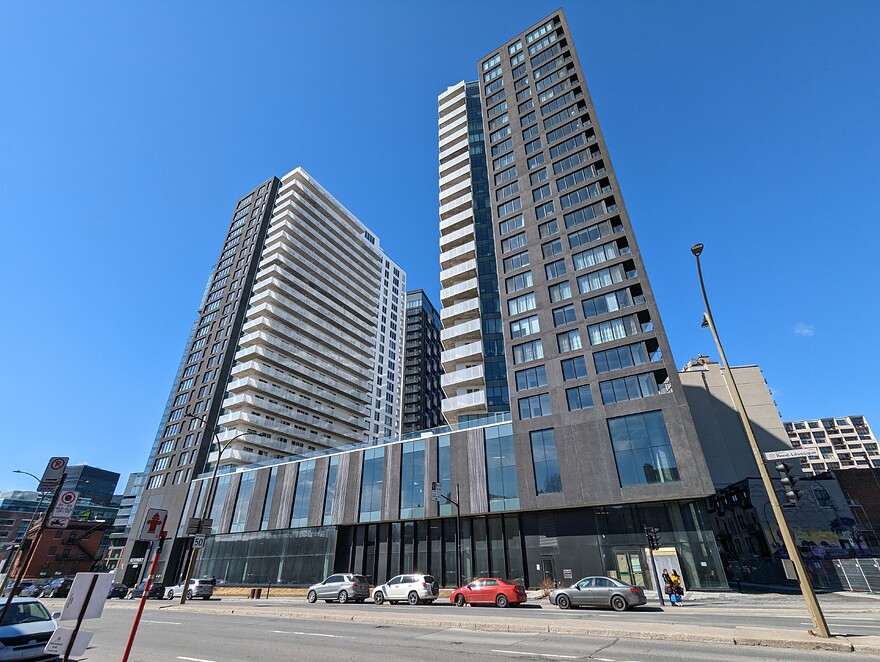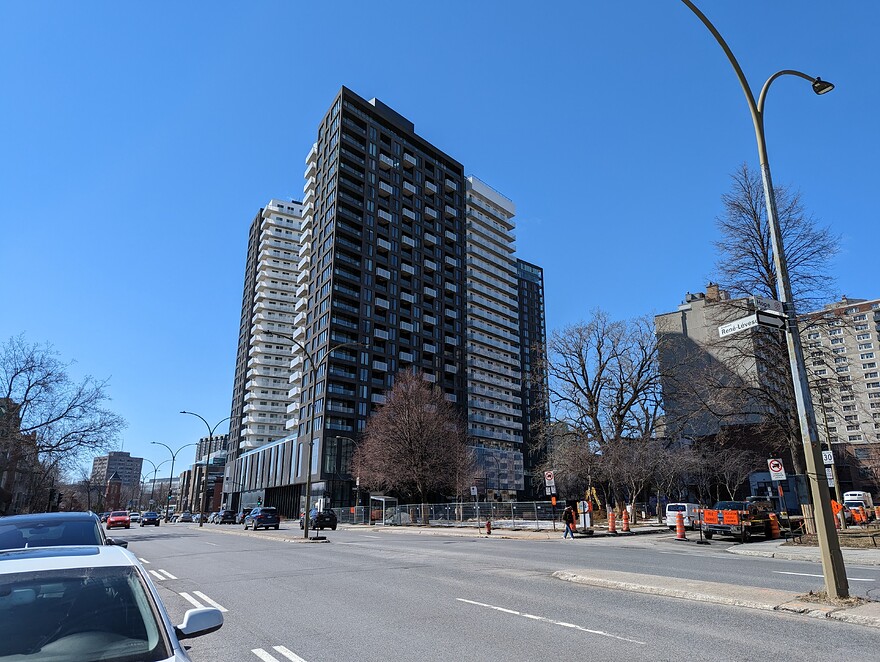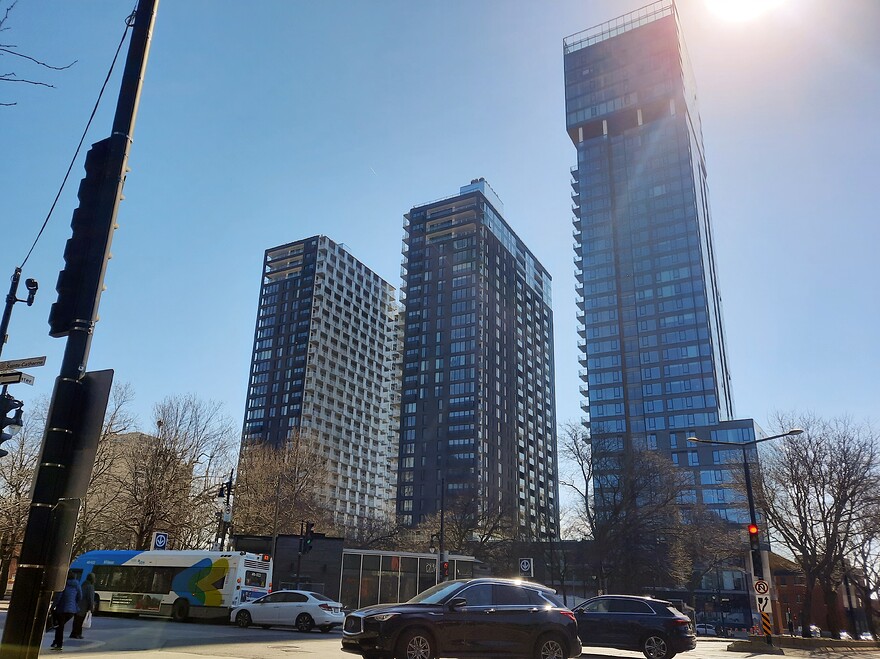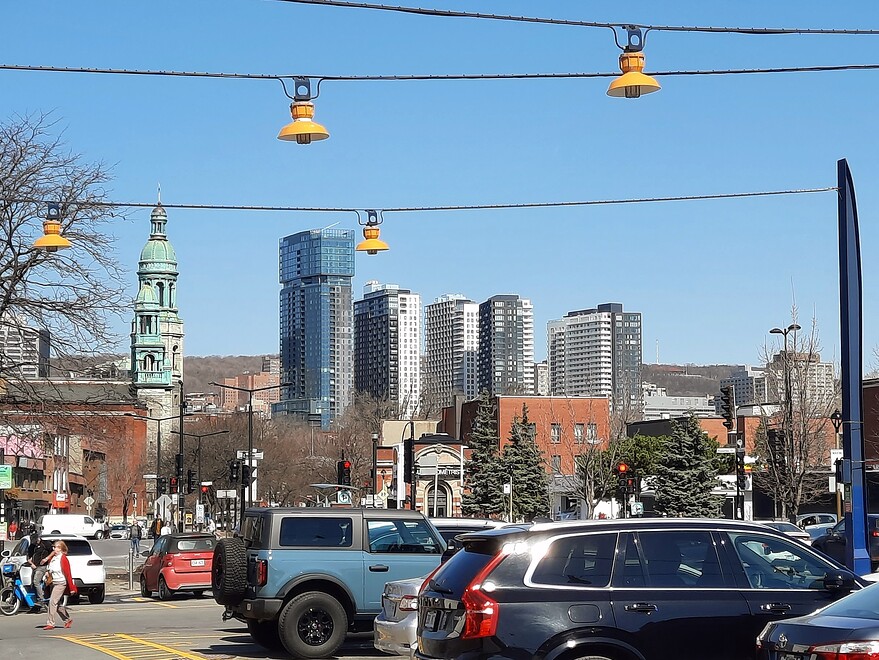J’imagine qu’il s’agit d’un avant-goût de ce que souhaite réaliser HRM sur le site de la tour 6.
Article also states that the building is 443 ft tall/135 metres.
![]()
Residents of 2320 Tupper St., on the former Montreal Children’s site, say they can’t sleep from the constant noise of the ventilation system blasting at them from the facing new luxury condo tower at 1111 Atwater Ave.
Caught in a condo nightmare, losing sleep over noise next door
As buildings get taller and more closely packed in Montreal, the risks of construction disturbances “become more and more significant."
Linda Gyulai
Montreal Gazette
Published Jan 21, 2023 • Last updated 5 days ago • 8 minute read
Jenny Chen bought an air mattress and now sleeps in the living room of her condo unit at 2320 Tupper St. “My bedroom is really really really loud,” she said. “I can’t sleep there.” PHOTO BY DAVE SIDAWAY /Montreal Gazette
The developer of 1111 Atwater, a 38-storey condo and rental tower under construction in downtown Montreal, is offering its clients luxury, but it’s giving the neighbours in the highrise condo next door a 24/7 racket.
1111 Atwater, which is the latest of six planned highrises on the former site of the Montreal Children’s Hospital, has a 20-storey mechanical ventilation system built into the side of the building that faces the neighbouring condo building at 2320 Tupper St. The two buildings are about 12 metres apart.
“I have to wear earplugs and without earplugs, I can’t get to sleep,” Eric Tian, who lives on the 12th floor of 2320 Tupper, said of the incessant noise. “It’s not acceptable at all.”
Since the fall, Tian has filed complaints with different city departments and his building’s management company and even called the police. His building’s management company contacted the developer of 1111 Atwater to complain about the constant loud whirring of the ventilation system.
1111 Atwater’s developer, EMD-Batimo Group, told the Montreal Gazette the ventilation system will be calibrated once all units are hooked up to it in the coming weeks.
“We have to finish the installation of the ventilation system,” said Judith Neveu, a vice-president responsible for sales and marketing for EMD-Batimo Group. Ventilation pipes still have to be installed on floors that are under construction, she said. “At the end, there will be a calibration that will reduce the noise to acceptable norms.”
Initially, the completion date was pegged in March, but now it’s expected to be by Feb. 1, Neveu said.
The developer has also hired a firm specialized in acoustical testing and noise reduction to carry out sound tests inside and outside 1111 Atwater and to offer noise-dampening solutions if they’re necessary, Neveu said. “Sound tests are underway and others are planned at the end to ensure the system respects the norms of the city.”
However, Tian says no one seems concerned he and his neighbours have been suffering with the noise since the fall.
Tian bought his one-bedroom unit in 2018, before construction of both buildings began. He moved in last February when 2320 Tupper opened and construction of 1111 Atwater was underway. It seems the latter building’s ventilation system began operating in October because Tian says that’s when the noise began and he could no longer sleep or tolerate being on his balcony.
“It’s like a disaster,” Tian said, adding the noise seems to be worse at night. “I can’t get good sleep at all.”
“I have to wear earplugs and without earplugs, I can’t get to sleep,” Eric Tian, who lives on the 12th floor of 2320 Tupper, said of the incessant noise. “It’s not acceptable at all.” PHOTO BY DAVE SIDAWAY /Montreal Gazette
The noise from the 1111 Atwater ventilation system seems to be even louder in the unit of Jenny Chen, who lives two floors down from Tian. Her bedroom window squarely faces 1111 Atwater’s ventilation system.
Chen bought an air mattress and now sleeps in her living room because the noise isn’t as bad in there as it is in her only bedroom.
“My bedroom is really, really, really loud,” she said. “I can’t sleep there.”
But Chen, who works from home three days a week, said her living room doesn’t offer respite from the constant noise of the ventilation system.
“It’s annoying because it’s 24/7,” Chen said.
She visited the unit in July before purchasing it from its first owner, but the ventilation system of 1111 Atwater hadn’t started making noise then, she said.
Tian, who is a member of his condo’s board, helped launch a petition for owners in his building affected by the noise. The petition has 57 signatures. Tian, Chen and other neighbours also started a text group to keep each other up to date on the city’s response.
For its part, the city of Montreal says it sent a noise-control technician to Tian’s building twice in December to record sound levels at different times of the day. The data is currently being analyzed, city spokesperson Hugo Bourgoin told the Montreal Gazette in an email last week.
“The data collected by the noise-control technician is not public,” he wrote. “Rest assured, however, that the Ville-Marie borough will take the necessary actions and, if required, will require corrective action from the owner of 1111 Atwater Ave.”
The Montreal Gazette obtained the reports of two noise level tests made in December through an access-to-information request with Ville-Marie. One test found the average sound level in a bedroom in 2320 Tupper was 50 dBA with the window open, which surpasses the city’s regulated evening norm of 40 dBA by 10 dBA. The other test registered an average of 48 dBA in a bedroom with the window closed, surpassing the city’s evening norm by 8 dBA.
Decibels increase exponentially, so a 10 dBA increase results in a 10-fold increase in sound intensity and in what humans perceive as a two-fold increase in sound volume.
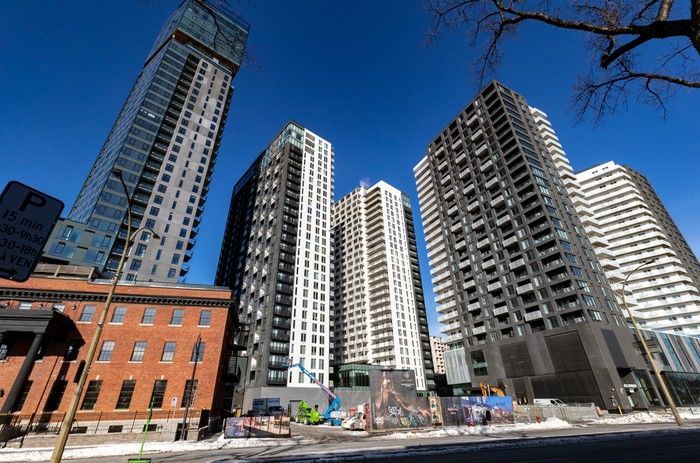
The former site of the Montreal Children’s Hospital: at far left, the 1111 Atwater tower with the noisy ventilation system; second from left, 2320 Tupper. PHOTO BY DAVE SIDAWAY /Montreal Gazette
According to World Health Organization guidelines, noise outside homes should not exceed an average of 55 dBAs during the day, and 40 dBAs at night. Environmental noise negatively affects health through annoyance and sleep disturbance, according to the WHO, which says the effects can lead to anxiety, depression and cardiovascular illnesses, such as hypertension, strokes and heart attacks.
The borough noise-control technician’s report says more sound tests are needed. It also lists communication with the project manager of 1111 Atwater since December and as recently as last week. “The ventilation installation on site at this time is temporary for the construction and the permanent installation is in progress (approximately 50 per cent completed),” it says. “It should be completed on Feb. 1, 2022. Gaskets are being installed on the non-return flaps to dampen noise.”
“The city of Montreal is concerned about the well-being and quality of life of the population,” Bourgoin said in his email. “It is for this reason that the Ville-Marie borough reacted quickly following the two complaints received (on Dec. 1 and 15) in connection with the situation to which you refer.”
The borough “is monitoring the situation closely and rest assured that if action proves necessary, it will require the implementation of corrective measures.”
However, Tian and Chen said they don’t understand why the city and Ville-Marie borough issued a construction permit allowing 1111 Atwater to position the ventilation system to face the units next door at 2320 Tupper.
Their own building, they said, has a ventilation system at the base of the building.
The ventilation system along the side of 1111 Atwater starts at about the ninth floor and reaches about the 29th floor. Above that, the tower has 25 penthouses, starting at $2 million per unit. A real-estate broker is listing one of the penthouses for $12.1 million plus tax.
Ted Kesik, a professor of building science at the Daniels Faculty of Architecture, Landscape and Design at the University of Toronto, said ventilation systems are often placed on the roof of a building. It’s quieter and the air is cleaner up there, he said. Highrises require ventilation systems to pump fresh air into the units.
Responding to the situation at 1111 Atwater, Kesik said it is unreasonable for residents in the neighbouring tower to have to put up with the noise disturbance for four months.
“I don’t think it’s acceptable,” he said. “I think it could be avoided as well.”
Kesik said technology exists to limit construction disturbances. A temporary sound barrier would work, for example, he said. But in the absence of municipal regulations that require builders to use them, most builders won’t voluntarily pay for them, he said.
“We have the technology to make it so it’s not so bad,” Kesik said. “It’s going to cost a little bit of extra money. But the developers are making a lot of money. They can afford a little bit of sound controls.”
Complaints about disturbances like construction noise and blocked sunlight won’t go away, he added. Every large city is driving for “intensification” — packing in ever taller buildings next to existing buildings — to limit urban sprawl.
“People are building in the city on any piece of land they can get,” Kesik said.
“We’ve never really had noise bylaws in place for construction. People have always said you have to put up with those sorts of things.
“(But) If you’re going to build like this — close together — we have to start making some rules. It’s not just for noise, it’s also for visual privacy and people want access to sunlight.”
Jenny Chen visited her condo unit in July before purchasing it from its first owner, but the ventilation system of 1111 Atwater hadn’t started making noise then. PHOTO BY DAVE SIDAWAY /Montreal Gazette
Montreal architect Daniel Pearl, a co-founder of the firm L’OEUF architects, which specializes in environmental and sustainable building design, said some flexibility is needed during construction. For example, the air needs to be flushed out of a newly built condo tower for a brief period after floor varnishing and painting. So the ventilation system might work on overtime for two weeks, he said.
“But they shouldn’t be able to make noise to the point where people can’t sleep,” he said.
Pearl, who is also a professor at the Université de Montréal’s school of architecture, agrees the city needs to enforce noise guidelines during construction. As buildings get taller and more closely packed in Montreal, the length and risk of construction disturbances “become more and more significant,” he said.
“There are rules for the end of construction. But do they (the city) have rules for extended periods of construction?”
The construction noise issue also extends to roadwork, Pearl said, adding he lived through three years of jackhammering as the city rebuilt the Atwater Tunnel. He said he knows first-hand the city doesn’t have rules protecting residents from construction noise over an extended period.
It’s also up to developers to build more noise-resistant buildings, Pearl and Kesik said.
For example, double-glazed windows are standard in Canada. But triple-glazing is more energy efficient and also cuts the noise level in half, Kesik said. Perhaps cities should require triple-glazed windows in places where towers are being built close together, he said. Most noise comes through the glass, he added.
And part of the answer comes down to tried and true urban planning principles, he said. Did the city have to allow six highrise towers to be built on the former Montreal Children’s Hospital site? Or could it have allowed four towers and three- or four-storey buildings or townhouses in between?
“Developers will go for the maximum they can get, so they’re always arguing for more,” Kesik said. But, he added, it’s for the city to set limits.
J’ai eu un problème similaire lorsque mom appartement se trouvait juste au-dessus des ventilateurs d’un restaurant. Non seulement ca faisait tout un vacarme, mais en plus tu te prenais les odeurs de friture en plein nez. Heureusement, ce n’était qu’une sous-location et je suis pas resté bien longtemps.
Au sujet du Square Children’s aussi:
Les travaux vont commencer en février.
Every character in the renders looks northern European
I hope they will tear down the Forum.This once-revered hockey-shrine looks like a dump.
I do agree with you, it will probably never happen. There is a proposal to build several towers on top the existing forum which I also doubt will ever happen.
Forum Towers | Ashkenazy Acquisition Corporation (aacrealty.com)
Je fabule mais à mon sens, on a là un site qui pourrait retrouver une vocation sportive, notamment en restaurant le forum mais en proposant des anneaux de compétition (patinage de vitesse, voire vélodrome) et incorporer des espaces commerciaux / communautaires au rez-de-chaussée et même des espaces extérieurs potentiellement utilisables sur le toit (athlétisme, basketball). Idéalement transformable en une patinoire extérieure publique réfrigérée. Bref, un pôle sportif et communautaire complémentaire à l’offre du complexe olympique. Et bonifiant les services du secteur en matière d’accès au sport d’extérieur.
Why do you doubt this? Ultimately everything patrimonial about the forum has been stripped bit by bit by its owners, literally nothing remains. The building has the construction of a big box store currently and only hosts a movie theater and cégep classes as their main tenants. It’s definitely ripe for development and complete demolition in my opinion. The only trap card would be if the fantastic brick work remains underneath that uglass aluminum front they installed…
Ce serait une excellente idée, mais je ne pense plus que quoi que ce soit puisse être construit dans le quartier sans une composante résidentielle.
I know it’ll never happen, but I’d love to move the Centre Bell back to the Forum and extend the Westmount sub’s tracks back to Gare Windsor.
As someone who lives in the area , the last thing I care about is if the forum is destroyed , rebuilt or whatever else . What actually matters in this area is criminality and homelessness problems .
